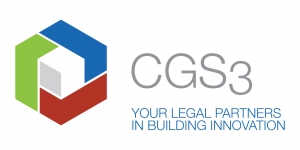While commercial real estate becomes increasingly scarce and expensive, urban populations continue to grow with millennials demanding more retail services. Challenged by local jurisdictions trying to curb sprawl, retailers are adapting to these economic, demographic and regulatory changes by moving away from their prototypical stores and developing smaller formats for in-fill locations.
Moreover, as internet retailers like Amazon have become adept at capturing sales from a broad demographic of consumers, the need for brick and mortar retailers to create a “shopping experience” has never been greater. Apple was a pioneer in creating that shopping experience with its Apple Stores – and, as a result, more mall retailers are focusing on using their space to deepen brand identity and solidify positive connections with consumers. Now, a number of national “big-box” retailers including Gap, Target, Petco, Best Buy, Office Depot, and Walmart are leading the pack in downsizing store footprints in order to bring the shopping experience to urban neighborhoods.
Target has recently adopted two new formats, dubbed “CityTarget” and “Target Express.” Both concepts offer smaller footprints than traditional Target stores – in San Francisco and downtown Los Angeles the stores range from 100,000 to 120,000 square feet, while the Target Express, which just opened its doors in the South Park neighborhood of San Diego on October 7th, is approximately 18,000 square feet. These small format shops aim to bring the convenience of their big-box counterparts to the modern urban dweller on the consumer’s terms.
The trend seems to be stretching even into established suburban areas as well. Wholesale giant Costco has started opening stores in regional malls where an existing department store has closed. In these situations, Costco has demolished the existing department store and constructed its store in the same location, but on a single level and with an entrance into the mall. In addition, other users such as theaters, hotels and even grocery stores have taken advantage of department store vacancies and mixed-use development opportunities within regional malls.
This trend will have broad reaching effects for urban consumers, local governments and CRE companies alike, providing consumers with more diverse shopping options closer to home. Smaller, yet more numerous, retail outlets will allow local jurisdictions to diversify their tax base, and commercial real estate companies will be able to accommodate marquee tenants in locations that were previously too small for such retailers.
Smaller formats also create internal efficiencies for the retailers – who can rely heavily on their e-commerce operations as an alternative to carrying large inventories of products on-site – and offer a way for them to open more stores within the same trade area. Moreover, millennials are comfortable with a hybrid consumer approach whereby items ordered on-line are delivered to the store that is closest to the buyer’s home, thus allowing smaller formats to offer a wider selection of merchandise without the expensive overhead costs associated of maintaining large on-site inventories.
Sources:
 By Craig Swanson, Crosbie Gliner Schiffman Southard & Swanson LLP (CGS3)
By Craig Swanson, Crosbie Gliner Schiffman Southard & Swanson LLP (CGS3)
Craig Swanson, a partner at the San Diego-based commercial real estate law firm CGS3, recently helped negotiate the lease of the smaller format Target Express project in San Diego’s burgeoning South Park neighborhood.
